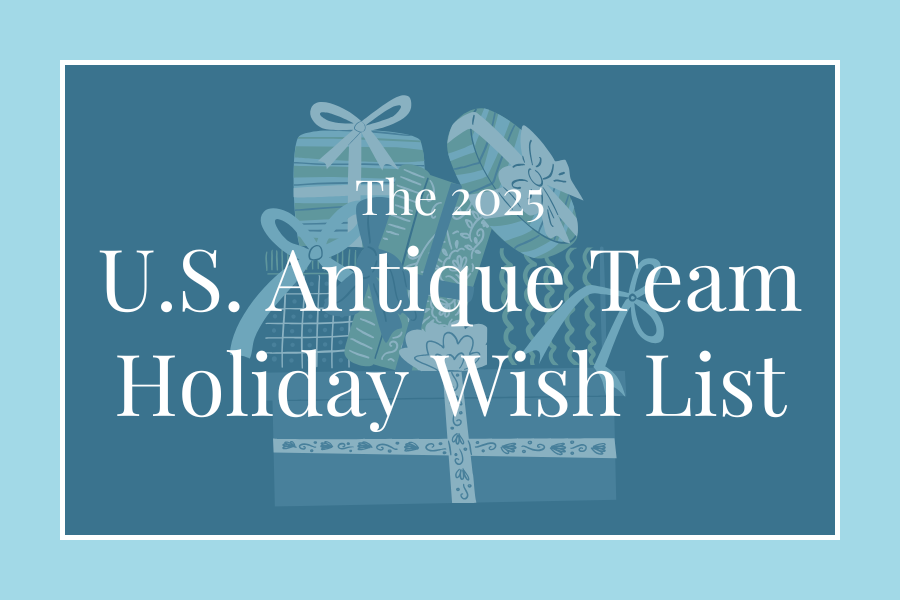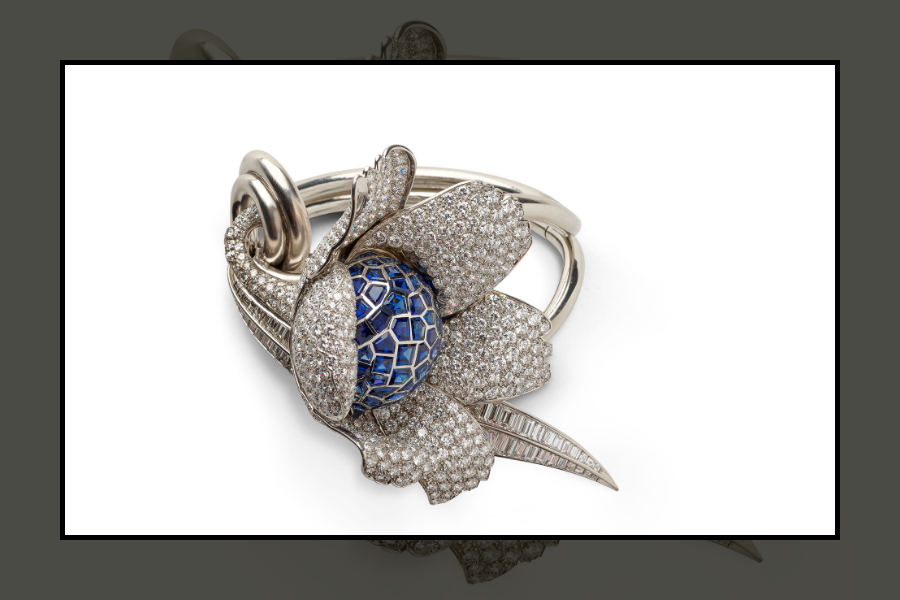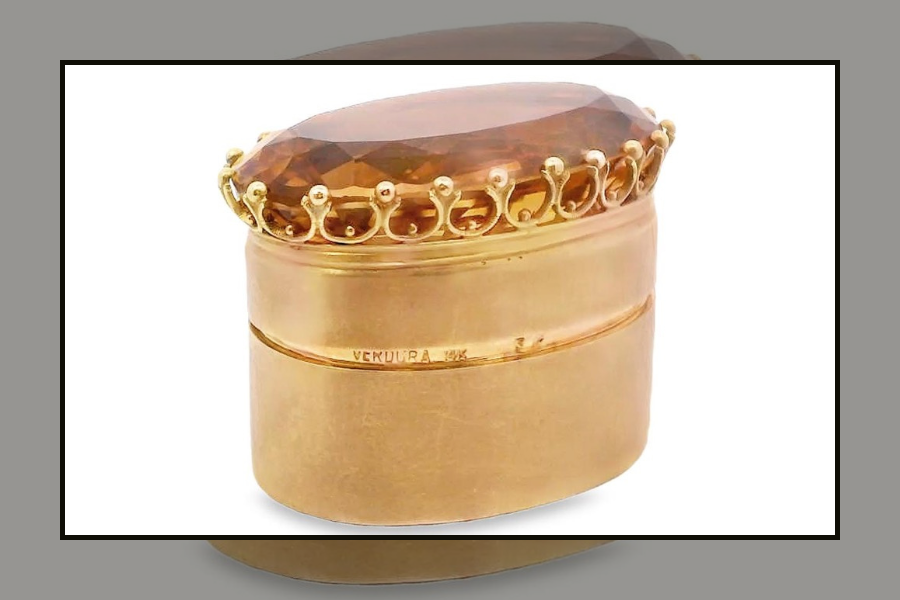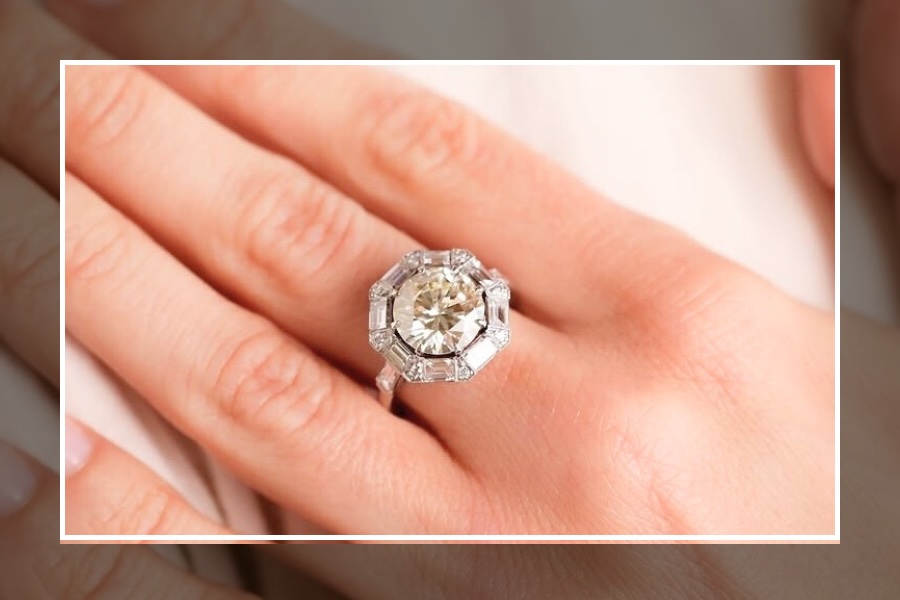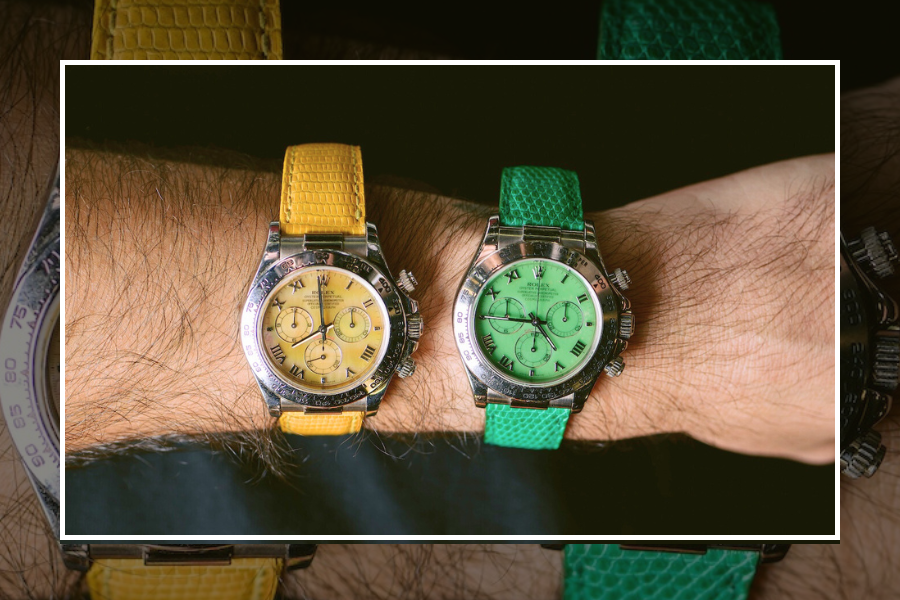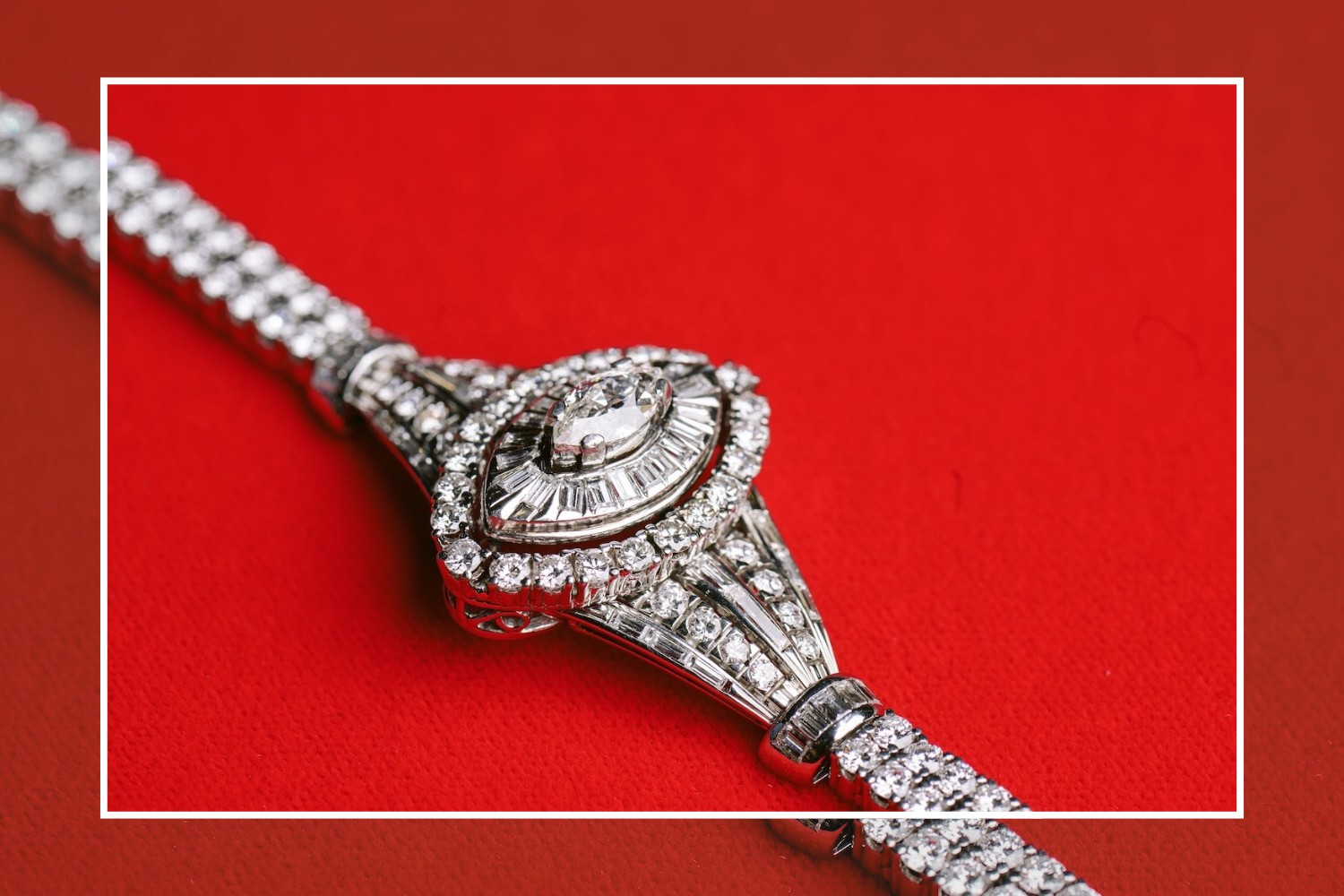The Georgian Period (1714-1830)
The Georgian Period was typified by floral and organic motifs, and silver fused to yellow gold. Rose-cut diamonds defined the era, as did flat-top garnets and colored gemstones set in closed backs and mounted with foil to enhance their hue. Parures were also popular – matching antique jewelry sets – and are now popular again, as are antique necklaces, which can detach into either earrings and a brooch, or two antique bracelets. Also flourishing in the Georgian period were sentimental pieces including portrait and lover’s eye miniatures, posy rings with poetic verse engraved into gold bands, and acrostic jewelry in which the first letter of the gemstones spelled out words of affection such as “Regard” and “Dearest”.
The Victorian Era (1837-1901)
The Victorian Era witnessed the heightened popularity of these sentimental love tokens, and also spans three important periods. The Romantic Period covers the earlier years when Queen Victoria married her Prince. Sentimental motifs continued to dominate–hearts, lover’s knots, flowers, bows, crescent moons and serpents (which Queen Victoria wore as an engagement ring, signifying enduring love).
This era also marked a major change due to the Industrial Revolution and the discovery of the diamond mines in South Africa. Women of all social status were now able to wear fine jewelry. The Grand Period encompassed the two decades when the Queen mourned the death of Prince Albert. Dark, somber Whitby jet, onyx and deep garnets came into vogue, with mourning and memorial jewels comprising personalized rings and lockets. Revival Etruscan, Greek and Renaissance influences were also fashionable. The later Aesthetic Period reflected a return to lightheartedness with symbols of luck, good fortune and naturalistic forms.
Art Nouveau (1880-1910)
Art Nouveau represented a revolt against the industrial age in pure artistic expression with the rebellious use of precious and non-precious metals, combined with unusual colored gemstones in depictions of nature – primarily insects, birds and floral motifs. Sensual and ethereal versions of the female form were also a recurring theme. Intricately detailed pieces displayed bold uses of color, daring materials and several types of enameling, such as plique-à-jour, in groundbreaking designs. The Art Nouveau movement began in France and influenced all of Europe and the United States, while overlapping with other periods. The pioneers included Rene Laliqué, Falize, Maison Vever, Georges Fouquet, and Tiffany & Co.
The Edwardian & Belle Époque Era (1901-1915)
The Edwardian & Belle Epoque Era was the shortest period in the history of antique jewelry. It reflected the elegance of King Edward VII and the delicacy of French Rococo décor. Platinum was introduced and influenced new settings for diamonds. The “garland” style of flowers and leaves, and millegrain, pierced and engraved metals gave jewelry of this period the appearance of airy lace and embroidery. Old mine-cut diamonds and natural pearls offered a monochromatic white look for earrings, brooches and necklaces.
Art Deco (1920-1939)
Art Deco reached its height in 1925 after the Decorative Arts Exhibition in Paris, and coincided with women gaining the right to vote in America. Industrial, linear and sleek, Art Deco captured the new world with streamlined forms – all white diamond and platinum looks, inspired by speed and skyscrapers. Influences from a global mix of cultures – Asia, Africa and Egypt – softened the geometric lines with stylized floral motifs and carved cabochons. Vibrant rubies and sapphires as well as onyx, jade, lapis and frosted quartz contrasted against diamonds and produced some of the most influential looks, which continue to inspire contemporary designers. Cartier, René Bovin, Boucheron, Raymond Templier, and Tiffany & Co. and Suzanne Belperron were just a few of the prevailing jewelers.
Retro Period (1939 -1950)
The Retro Period came about due to World War II when platinum and gems became scarce. Jewelers turned to lower-carat gold and semi-precious or synthetic stones, and rose and yellow gold took on the feel of fabrics, lending fluidity and movement. After the war, brooches became all the rage, and aquamarine, citrine and amethyst are now fashionable again in large stone antique rings.
Mid-20th Century (1950s – 1960s)
The Mid-20th Century period offered up the “cocktail party” as a stylish event throughout the US, and jewelry became more extravagant. Three-dimensional, whimsical and stylized animals set with vivid semi-precious stones also heralded this time frame, characterized by leopards and panthers from Cartier, Van Cleef & Arpels’ winged creatures, and Serpentini jewels from Bulgari. These houses, as well as Boucheron, continued to shake up their earlier visions with new innovations, while the U.S. saw the rise to fame of designers such as Paul Flato, Fulco di Verdura, David Webb, and Jean Schlumberger for Tiffany & Co. All of these designers were wildly creative and had a roster of customers, which included film stars and socialites.
Seventies Vintage (1970s)
There was much happening in the 1970s in the U.S.—the end of the Vietnam War, Watergate and Nixon’s impeachment, and the feminist movement all brought with them a new casual attitude toward jewelry. Houses such as Bulgari, Cartier and Tiffany & Co kept up with the changing times—Iconic pieces include Bulgari’s coin necklaces and Cartier’s Love Bracelet. Elsa Peretti came onto the scene and redefined jewelry for a new generation with her bold sculptural shapes and pieces in clean polished sterling silver in silhouettes that are once again popular today—in their new versions—the bone cuff, the perfume bottle pendant, the open heart—but when you can find the original pieces, my advice is to invest in them.
Bejeweled Magazine: https://www.bejeweledmag.com
Beth-Bernstein.com
Beth Bernstein has an extensive knowledge and passion for fine jewelry. Beth started her career as a fashion photo stylist and style writer for women’s magazines. She launched a jewelry collection in the 90s, and after selling to 250 retail outlets and missing a career in writing, she transitioned into consultancy for jewelry brands and began writing about jewelry for various magazines, which she still does. She is editorial director and founder of Bejeweledmag.com, she is a jewelry historian, antique jewelry expert, collector of period and modern jewelry and has published four books to date. With over 25 years experience in the industry, Beth has gained a full spectrum of knowledge of the history of jewelry and she’s generously shared this knowledge with guided tours for attendees of U.S. Antique Shows’ events.
Copyright © 2020 by Beth Bernstein
All rights reserved. No part of this publication may be reproduced, distributed, or transmitted in any form or by any means, including photocopying, recording, or other electronic or mechanical methods, without the prior written permission of the copyright owner.


